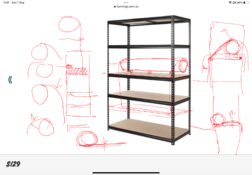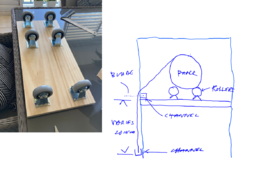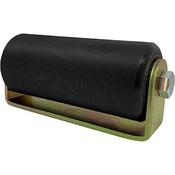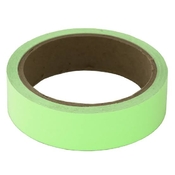what is the longevity and life expectancy of Fuji RA-4 papers? Does it have low fade like Kodaks papers did?
I'm going to reply based on what Fuji engineers involved in producing current paper produced in The Netherlands told me.
First off, the present/recent production 'Kodak' papers are suspect; the Fuji people buy some of it from time to time and subject it to analysis. Based on such analysis, one of the engineers remarked to me "I'd be surprised if prints on current Endura would last even a decade". This suggests that today's 'Kodak' paper isn't what Kodak paper used to be.
As to the longevity of the Fuji papers, I addressed this very specifically with them. Hard and fast numbers are difficult to give because they depend greatly on the conditions the prints are kept in. For dark storage (in otherwise favorable conditions), these engineers mentioned we should think in terms of centuries, not years. They gave 200 to 400 years as a ballpark figure. I've since seen that same number in a publication somewhere, although I don't quite recall where that was. Of course, none of this paper has been around for 300 years, so what really happens in that time scale, nobody knows. What it does mean, is that there's a lot of technology packed into these papers that ensure a long life, in particular in dark storage. For display under muted, artificial light, the life expectancy should be a couple of decades, but it depends greatly in light intensity and in particular the presence of UV light. For the amateur Fuji papers (entry-level Crystal Archive) was quoted lifetimes on indoor display of 25-30 years, and up to 45 years for professional papers (e.g. DPII), at 450 lux 12 hours per 24 hours. The Maxima paper has the best longevity of the paper range and they called it 'museum quality' (note that that's not some kind of objective industry standard or anything).
The above numbers are subject to proper processing; for instance, the health of the blix is quite important (needs to be replenished to spec and blix times must be sufficient), as is washing after blixing. A single stabilizer bath is not a good substitute for a thorough wash of the paper. Don't be afraid to "wash out the optical brighteners from the emulsion" as some people say, because the OBA's (which are certainly there in significant amounts) are not in the emulsion, but in the PE coating. Nothing washes out of that layer.
Fuji papers have multiple protections against degradation; for instance, there are UV blockers in the topcoating, which protect the dyes from incoming UV light. Moreover, there are sacrificial compounds in the emulsion itself which absorb the energy that's released as UV radiation hits dye molecules, which reduces the degradation since the excess energy is dissipated into the emulsion. For prints on display, I imagine it will furthermore help greatly to have additional UV blocking in the form of picture frame glass with an UV-blocking layer etc.
As an anecdote, I took down a print some time ago that I had on a wall right next to a south-facing window, with no significant UV protection. This was a FUJIFILM Crystal Archive (consumer-grade paper) print. On sunny days, this print was exposed to multiple hours of intense and direct sunlight, especially in summer. Although I never noticed any fading, when I took it out of its frame, the difference between the exposed surface and the edge that was underneath the matte was quite clear, with the exposed area showing very visible fading. The fading, however, is virtually equal in all three color layers, so it only looked like fading and not like color shifting. This is one area in which paper manufacturers, and most definitely Fuji, spend attention - not only should the print fade as slowly as possible, when it does, it should do it as gracefully as possible. I was actually amazed at how well the color channels tracked in the significant amount of fading.
This print had spent about 10 years on that wall; given the lighting levels, which far surpassed the indoor levels I mentioned in connection with the lifetimes (25-30 years for this kind of paper), I would say that the estimates I got from Fuji for on-display lifetimes are realistic. It's only a single comparison/benchmark point, of course.
You might be able to obtain additional information from
Wilhelm, who does accelerated fading testing, also for/on Fuji materials. For instance,
one particular publication I was able to find easily gave a longevity for Crystal Archive under display conditions between 26 (bare print exposed to bulb light) and 50 years (framed under UV-filtered glass) and album-storage of >100 years (page 2). There may be more data on Fuji materials in the Wilhelm publications, but you'd have to do some rooting around.
Note that when it comes to permanence testing, there are some aspects that will spoil the broth. Especially the lighting levels under which materials are being tested, as well as the acceptable degree of shift or fading, can make massive (up to orders of magnitude!) differences. This, to a large extent, has always been the explanation of the historical difference between Kodak and Fuji materials, with Fuji generally testing under twice as high lighting levels as Kodak (1000lx vs. 450lx IIRC). As a result, Kodak always came out on top - but the playing field wasn't level...If you search on this forum a bit, you'll find some posts by Photo Engineer (RIP) where he mentions discussions with Henry Wilhelm and some differences in opinion on relevant testing conditions. This is a good (albeit not very detailed) hint at how profound such differences have always been, and why interpreting test results is complicated.


















